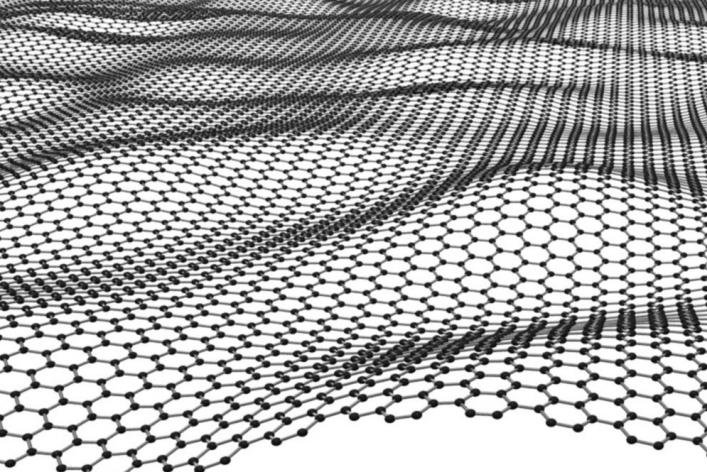Researchers have unlocked the superconductive potential of graphene. Photo by Jannik C. Meyer/U.C. Berkeley/HA/European Pressphoto Agency
Jan. 19 (UPI) -- Scientists have found a way to turn graphene into a superconductor. Materials scientists at the University of Cambridge successfully unlocked the material's ability to carry current without resistance.
Previously, graphene-derived superconductors required the use of superconducting additives. Unfortunately, these superconducting materials corrupted graphene's other qualities, super strength and flexibility.
"Placing graphene on a metal can dramatically alter the properties so it is technically no longer behaving as we would expect," Cambridge scientist Angelo Di Bernardo said in a news release. "What you see is not graphene's intrinsic superconductivity, but simply that of the underlying superconductor being passed on."
During lab experiments, researchers found a new superconducting material, praseodymium cerium copper oxide, PCCO, that can initiate graphene's innate superconducting abilities without compromising its other qualities.
"It has long been postulated that, under the right conditions, graphene should undergo a superconducting transition, but can't," explained Cambridge researcher Jason Robinson. "The idea of this experiment was, if we couple graphene to a superconductor, can we switch that intrinsic superconductivity on? The question then becomes how do you know that the superconductivity you are seeing is coming from within the graphene itself, and not the underlying superconductor?"
Researchers were able to differentiate between the superconductive signature of PCCO and the superconductive signature observed in PCCO-enhanced graphene. Pairs of electrons interact differently, inhabiting different spin states, depending on the type of superconductor and superconductivity.
Scientists observed a unique spin state among the electron pairs moving through the graphene superconductor.
"What we saw in the graphene was, in other words, a very different type of superconductivity than in PCCO," Robinson said. "This was a really important step because it meant that we knew the superconductivity was not coming from outside it and that the PCCO was therefore only required to unleash the intrinsic superconductivity of graphene."
The discovery -- detailed in the journal Nature Communications -- could pave the way for a variety of new and innovative superconducting devices.















